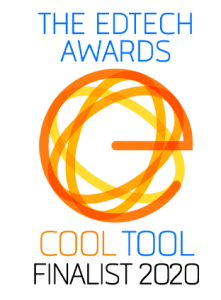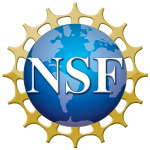You have probably been reading about topics like predictive hiring, predictive analytics, Big Data, and artificial intelligence applied to employee selection. You might be wondering whether any of this applies to your organization. You may be asking questions like:
- Do I have enough data for Big Data?
- If I’m implementing predictive hiring, what should I be predicting?
- OK, I might be interested, where do I start?
How We Hire and How We Will Hire
How do we hire?
Most organizations use one of two strategies to screen candidates and hire employees:
- Seat o’ the pants
- Job-related assessments
The “Seat o’ the pants” method remains the most popular. Many organizations may use recruiter judgments to steer candidates towards open positions, and nearly all organizations use some form of hiring interview to “get a feel” for applicants, (subjectively) assess their ability to do the job, and to predict whether applicants will fit in once they onboard.
“Job-related assessments” sounds more rigorous, and often it is. Based on knowledge of the job requirements, the organization may choose one or more “predictors” – indicators of potential to do the job, e.g., five years experience or scores on a personality test.
Both approaches share two things in common: 1) Job applicants wind up ranked (most to least qualified); and ranked on characteristics they bring into the hiring process (who has the most experience? who did the best on the interview?).
How will we hire?
Soon, nearly all organizations will be using predictive hiring, just as already many are today. Candidates can be compared on many of the same factors historically used – education, prior experience, interview behavior, scores on selection tests. But, predictive hiring methods are characterized by two important qualities:
- Candidates are ranked by a scientifically-derived algorithm;
- The algorithm is determined by what works in practice for differentiating current employees on outcomes that matter to the organization.
Said more simply, with predictive hiring, it doesn’t matter whether a recruiter or hiring manager believes that a firm handshake, good grades in school, or an extroverted personality will help the applicant succeed. In modern hiring, research and data analytics identify the specific attributes that characterize successful employees, and assigns the greatest weights in the hiring process to those attributes.
When we say that nearly all organizations will be using this methodology, it’s because it works. On nearly a weekly basis, we see advancements in technology and the use of computers to transform how we access information and interact in the world. We see industries that have been quick to jump on board the technology train, and industries slow to adapt. It’s the individuals, organizations, and industries that are slower to adapt that are being left behind. Will your organization be left behind competitors who are quicker to embrace predictive hiring?
Since you are still reading, let me address the questions I raised at the beginning, including how to get started.
Do I Have Enough Data for Big Data?
Being honest, this is probably the wrong question. Terms like Big Data, predictive analytics, artificial intelligence, and machine learning get tossed around like they all mean the same thing. They don’t. If you are asking whether you have enough data for Big Data, you probably don’t. It’s the Amazons, Facebooks, and (yes) federal government agencies that are building multiple, integrated databases tracking human behavior who are in the position to leverage that data to understand and affect the decisions we make.
But, the use of algorithms and variables to improve hiring outcomes doesn’t need Big Data. It just needs Some Data, and thoughtful analysis.
If I’m Implementing Predictive Hiring, What Should I Be Predicting?
THIS is a great question. This is a question of work outcomes, what problems will be solved via better hiring decisions. Think about any predicted outcome as a binary variable. An internet user clicks on a link or doesn’t, a consumer purchases a product or doesn’t, an employee successfully performs their job or doesn’t, another employee quits or stays.
Predictive analytics begins by lining up a set of known information about a workforce (e.g., education, experience, training, interview performance, scores on assessments, the day of the week they filled out their online applications, etc.). It then uses statistical procedures to compare one group (e.g. high performers) to the other group (e.g., low performers) on each variable, deciding on which variables differentiate the best, and assigning weights to those variables on the basis of their power to differentiate. An algorithm is generated that applies those weights to rank future applicants.
The most commonly predicted outcome today is job performance. But, it doesn’t have to be the only outcome you can try to predict. jobZology has built a predictive hiring system that allows organizations to rank applicants on the basis of fit to job and fit to culture. Which applicants will find joy, purpose, and meaning when hired for your organization? Why these outcomes? We know that our system reduces employee turnover, and we believe that employers want a workplace of employees who are engaged and fulfilled by the work they do. But, the decision of what to predict remains yours!
OK, I Might Be Interested, Where Do I Start?
While developing a predictive hiring system is relatively straightforward, it does require expertise in:
- Choosing work outcomes that matter to your organization
- Identifying potential predictors in your existing records (e.g., education and experience of current employees)
- Identifying new job-related assessments that may add to the predictive potential of the new hiring system
- Conducting a brief research study to generate the algorithm and ensure the hiring process is EEO compliant
- Training you and your staff on use of the new system
All of this means that unless you are working for a relatively large organization with in-house expertise in measurement and research, you’ll likely need to bring in outside help. While this means some additional expenses, our clients experience a large ROI from more efficient hiring practices and reducing turnover. Most importantly, they are riding the train, ready for the future, and not left behind.
Click here to learn more about creating a custom predictive hiring solution for your organization.
Thinking about using predictive hiring but wondering where to start? This article provides a basic overview on predictive hiring and compares it to traditional hiring practices. We also cover why you need to start using it, fundamentals on how it works, and how to get started.







